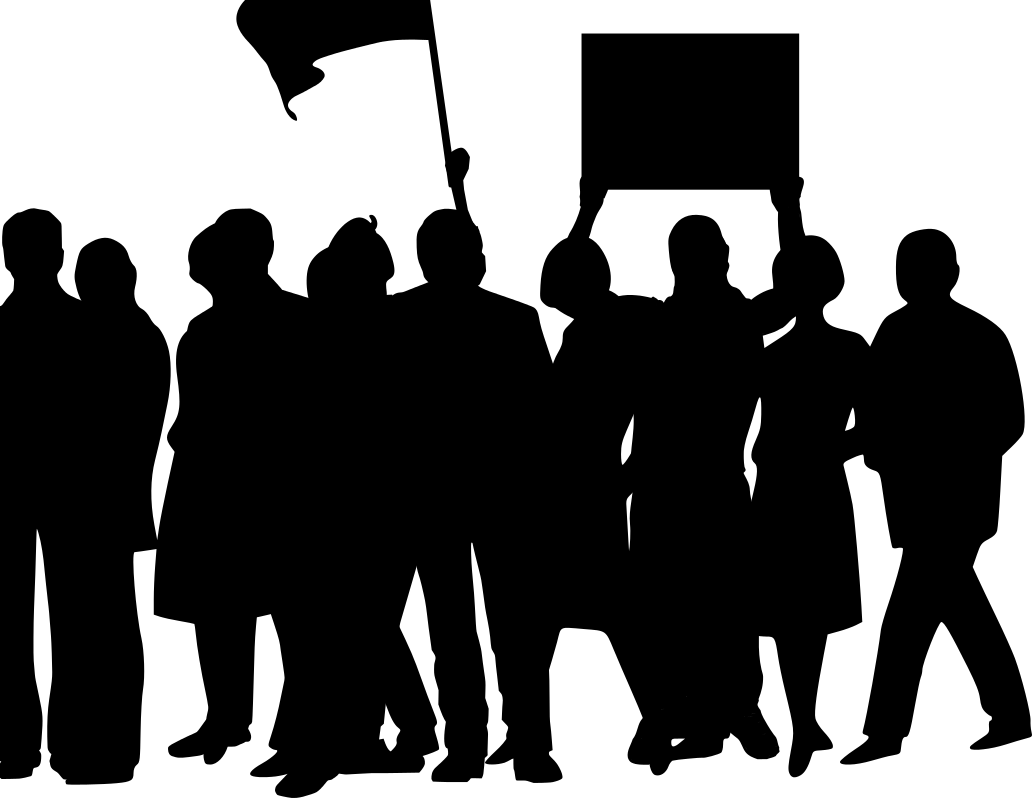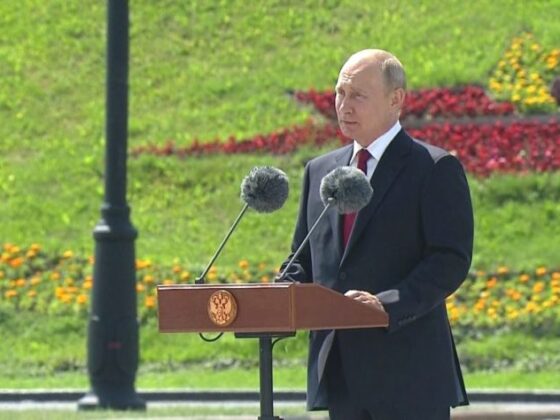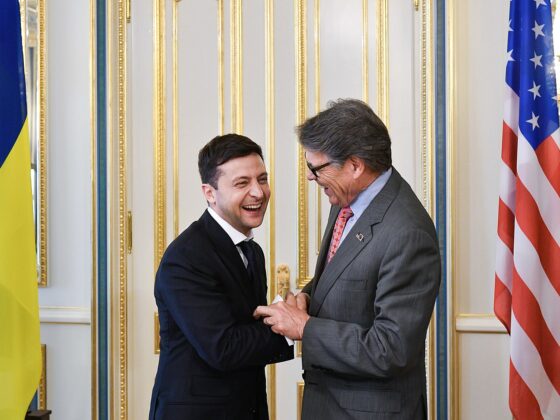(PONARS Eurasia Commentary) By Giorgi Beridze, University of Tartu/Tbilisi State University, Alla Leukavets, University of Tartu/Belarusian State University, and Andrey Makarychev, University of Tartu. This is the second installment in: “From a State of Exception to Policy Legitimation: The Politics of COVID-19 in Russia, Belarus, and Georgia.”
One of the questions the current COVID-19 debate left understudied is how different governments publicly legitimize their crisis management policies. Among post-Soviet countries, this issue is of particular importance for political regimes that are preparing for elections (Belarus and Georgia) or a constitutional referendum (“people’s vote” in Russia) either during the pandemic or immediately after it. In this short policy series, we look at how political elites in these three countries transform and normalize their policies from “states of exception” (a situation of emergency) to public mobilization for supporting and legitimizing their anti-pandemic strategies.
We build our analysis upon two concepts—sovereignty and governance—that are key for understanding political dynamics on the national level. Our general assumption is that in most post-Soviet countries, there is a profound gap between the two in the sense that sovereignty is overwhelmingly understood as an issue of possessing the power to rule. At the same time, governance is reduced to the technical administration of the everyday routine. This gap, by and large, corresponds to the well-articulated conceptual distinction between political and managerial dimensions of power, and keeping the two as far from each other as possible appears to be one of the strategies used by different regimes, mostly by illiberal ones. The idea behind this separation is to fend off the bearers of sovereignty from the responsibility for possible managerial risks and failures, and thus to create a politically sterile space of utmost convenience and safety for sovereignty holders.
However, the COVID-19 crisis has undermined this comfort zone and reconnected sovereignty with governance, since in the context of the post-emergency developments, each instance of public legitimation of political authorities (through elections or plebiscite) inevitably becomes a form of a “people’s vote” on the effectiveness of crisis management. This is because the pandemic threat, perhaps temporarily, devalues the importance of ideological or institutional arguments and puts in the center of (bio)political agendas issues of health, care, and protection of human lives and bodies.
Part 2 of 3: Belarus
COVID-19 as a trigger of democratization?
We build our analysis upon two concepts—sovereignty and governance—that are key for understanding political dynamics on the national level. Our general assumption is that in most post-Soviet countries, there is a profound gap between the two in the sense that sovereignty is overwhelmingly understood as an issue of possessing the power to rule. At the same time, governance is reduced to the technical administration of the everyday routine. This gap, by and large, corresponds to the well-articulated conceptual distinction between political and managerial dimensions of power, and keeping the two as far from each other as possible appears to be one of the strategies used by different regimes, mostly by illiberal ones. The idea behind this separation is to fend off the bearers of sovereignty from the responsibility for possible managerial risks and failures, and thus to create a politically sterile space of utmost convenience and safety for sovereignty holders.
However, the COVID-19 crisis has undermined this comfort zone and reconnected sovereignty with governance, since in the context of the post-emergency developments, each instance of public legitimation of political authorities (through elections or plebiscite) inevitably becomes a form of a “people’s vote” on the effectiveness of crisis management. This is because the pandemic threat, perhaps temporarily, devalues the importance of ideological or institutional arguments and puts in the center of (bio)political agendas issues of health, care, and protection of human lives and bodies.
Belarus represents a special case in managing the COVID-19 pandemic. Belarus did not introduce a nationwide quarantine and refused to close its borders. At the end of March, a two-week, self-quarantine requirement was announced for individuals coming to Belarus from abroad as well as those with a confirmed diagnosis or the status of first- or second-level contact. In addition, the Ministry of Education extended the spring holidays in schools by two weeks. Apart from these minimal selective measures, the government did not introduce a nationwide lock-down, and the majority of the population continued to go to work as usual, mostly without observing the necessary protective measures.
These crisis management strategies proved to be wrong and led to a quick increase in the number of COVID-19 diagnosed cases. The health system in Belarus is not fully reformed, and there is a great shortage of medical supplies. The official COVID-19 statistics in Belarus do not reflect reality. Since April, the number of diagnosed cases has been steadily growing. In June, the Belarus Ministry of Health reported 51,000 registered cases of the coronavirus. The current death toll in Belarus is near 300, but many other lethal cases have been, and are, being diagnosed as pneumonia.
Narratives
The government has applied several discursive strategies in order to legitimize their adopted anti-crisis measures, particularly in the view of the upcoming presidential elections scheduled for August 9, 2020.
First, the ruling regime justified its approach by emphasizing that a quarantine would negatively affect the Belarusian economy. This justification was mostly presented as a “false dilemma” to the general public. According to it, the government has to continue a business-as-usual approach or the economy will collapse and all will lose their jobs. Although this approach might have delayed the negative consequences of the pandemic, Belarus’s energy-dependent economy had already started to stagnate long before the onset of COVID-19 due to the conflicts between Minsk and Moscow as well as fluctuations in the global energy market.
Second, President Aliaksandr Lukashenka and his entourage ridiculed and shamed the necessity of adopting restrictive measures. They repeatedly emphasized that the coronavirus was just a “coronapsychosis” and that people should continue working and playing sports—and that certainly there were no viruses on athletic fields or ice-skating rinks. During an official meeting, Lukashenka proposed to kill the virus by drinking vodka and going to saunas.
The message sent to the general public was that wearing a mask is unnecessary and even shameful. This narrative was emphasized not only by Lukashenka himself but also by other officials, for example, by Minister of Foreign Affairs Uladzimir Makei who said that he feels embarrassed to wear a mask when shopping. The political setup and the way that public discourse is administered in Belarus is based on a strong power vertical with the president as the sole provider of the official narrative. All other actors stay in the shadows, including the Health Minister, Uladzimir Karanik, and appear in the media when needed to confirm statements made by Lukashenka.
Third, the government officially announced that Belarus is a strong and independent state that does not blindly follow the rest of the world and has its own way of dealing with the crisis. Lukashenka stated in several of his speeches that “it is better to die on our feet, than live on our knees.”
A manifestation of this bravado strategy can be exemplified with several public events that were not postponed due to the pandemic. For example, Lukashenka said that delaying the May 9 Victory Day parade was impossible and will be held as planned in order to honor the memory of those who fought against fascists and also not to make Belarus look weak in the eyes of other countries. In addition, at the end of April, a nationwide subbotnik (day of community service) was held reportedly involving about 2 million people. Belarus is also the only country in Europe whose football teams continued playing in spite of the pandemic. By holding these public events, the regime tried to reinforce the narrative that Belarus is a strong state and has its own way of dealing with crises.
Fourth, in order to mitigate the potential reputational costs of its chosen crisis management approach, the Belarusian regime, for quite a while, applied the so-called strategy of “branding by association” and emphasized in its public discourses the success of the “Swedish-Belarusian” model in fighting the pandemic. By putting itself on the same level with Sweden, Belarus presented itself as equally successful in dealing with a crisis akin to a highly developed European state.
The upcoming presidential election represents a certain critical juncture for the development of Belarus. Political and economic conflicts with Russia, unprecedented volatility on the energy markets, and the looming negative economic consequences of the COVID-19 pandemic suggest that the Belarusian regime needs to start thinking about how to ensure its own survival. Popular discontent is growing and recent opinion polls demonstrate that around 62 percent see a considerable worsening in the economic development of their country.
Actions
In order to decrease the possibility of massive social protests and to prepare for the upcoming presidential elections, the government has been applying a number of strategies.
First of all, the election was not postponed in accordance with recommendations made by international institutions. By setting the election at the beginning of August, the authorities wanted to ensure that citizens would cast their votes still being on vacation mode before autumn starts when many families will have to face increased financial expenditures to send their children to school. Besides, holding elections in August decreases the possibility of international observers coming to Belarus and putting additional pressure on the regime to hold free and fair elections.
In addition, the authorities are trying to make sure that the most “active” opposition candidates will not be allowed to run. For example, Syarhei Tsikhanouski, Belarusian blogger, entrepreneur, and author of the popular YouTube channel “Country for Life,” has already been detained several times and his group for gathering signatures was not registered by the Central Electoral Commission. The government is currently applying the strategy of selective repressive measures in relation to the supporters of Tsikhanouski, including those who participate in pickets demanding his release or gather signatures in support of the candidacy of his wife, who took over Syarhei’s electoral campaign.
Tsihkanouski’s team organized a number of rallies around the country which are held under the slogan “Stop cockroach!”. The incumbent President Lukashenka is compared with a cockroach and a slipper, as a means of killing this insect, has become a symbol of the social protest movement in Belarus. The “Stop cockroach!” campaign has gained high popularity among the electorate. To express support, Belarusians bring old slippers and pile them up near picket areas. In response, the head of the Central Election Commission, Lydziya Yarmoshina, accused Tsikhanouski and his team of violating the legislation regulating the conduct of peaceful pickets and asked the Investigation Committee to bring him to justice.
However, the regime will exercise a certain amount of caution and will try to abstain from applying massive “hard” repressive strategies involving direct violence against the political opposition in order not to repeat the scenario of the 2010 presidential elections. The Belarusian government is aware that this can ruin the impression of “subtle” democratization that has been occurring after successful attempts by official Minsk to act as a regional mediator and peacemaker from the time of the 2014 crisis in Ukraine. Using hard repressive strategies can worsen Belarus’s relations with the West and weaken its leverage over Russia. Therefore, Lukashenka and his entourage are trying to reframe the narrative behind the election campaign from “people against Lukashenka” to “Kremlin against Lukashenka.” The idea is that all of the opponents of the regime automatically become traitors and Moscow agents who want to divide and weaken Belarus. This framing has already been applied toward Tsikhanouski as well as other contestants.
Furthermore, the government skews the playing field in favor of the incumbent by heavily dominating the media space. The official discourse presents Lukashenka as a winner in fighting the coronavirus and the only possible candidate able to save Belarus from the upcoming economic hardship. The political opposition is labelled as “losers” and “clowns” who will bring instability and weaken Belarus in the international arena.
Finally, the ruling regime has applied the strategy of reshuffling political elites before the August election. On June 3, Lukashenka dissolved the Council of Ministers. The new prime minister became Raman Galouchanka, who previously held the post of chairman of the State Military-Industrial Committee. Such pre-election rotations of elites is a common practice in Belarus. One rationale behind this strategy is to signal to the electorate that the government is ready for “renewal,” and the new ministerial composition will introduce changes to improve everyone’s lives. A second possible explanation is that Lukashenka wanted to dismiss Prime Minister Syarhei Rumas for his close connections with one of the current candidates running in the presidential election, Viktar Babaryka, as both of them used to work at Belgazprombank. Reshuffling and selective purging of elites have been two of the most popular strategies of elite co-optation and control that Lukashenka and his entourage have exercised over the last twenty-five years to ensure that no alternative sources of power would appear to challenge the ruling regime.
Conclusion
Recent and current developments in Belarus show that public discontent with the regime is rapidly rising. Mismanagement by the government of the COVID-19 crisis has contributed to increasing people’s support for the political opposition and led to the growth of protest movements in Belarus. Although it is premature to talk about any success of the “Slipper Revolution,” external and internal developments suggest that the upcoming presidential elections will be a litmus test, demonstrating to what extent the country might be entering the stage of regime transitions.
Part 1 of 3: Russia | The domination of the pandemic creates a risky environment for the July plebiscite.
Part 2 of 3: Belarus | COVID-19 as a trigger of democratization?
Part 3 of 3: Georgia | A success story in fighting Coronavirus?











